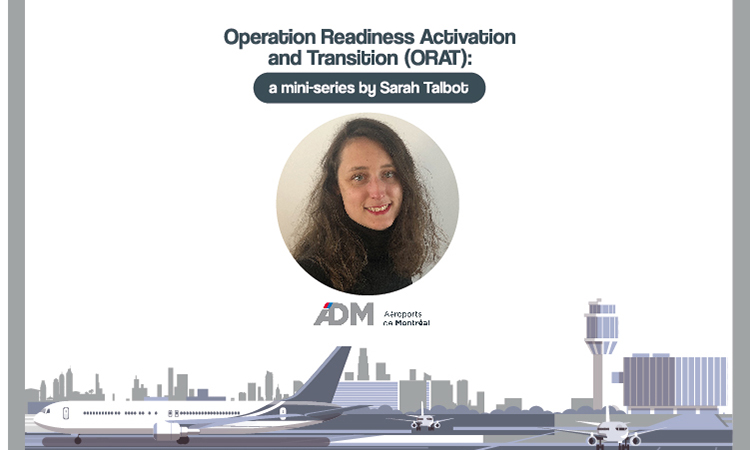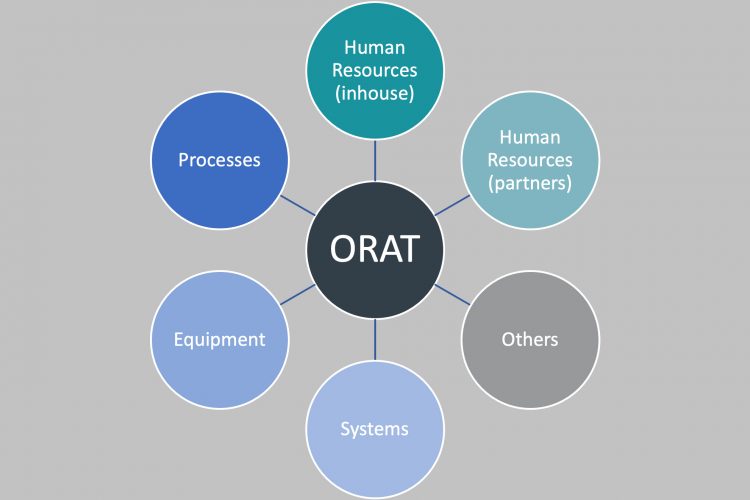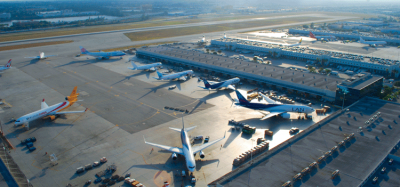Adapting ORAT to support aviation’s post-COVID-19 recovery
- Like
- Digg
- Del
- Tumblr
- VKontakte
- Buffer
- Love This
- Odnoklassniki
- Meneame
- Blogger
- Amazon
- Yahoo Mail
- Gmail
- AOL
- Newsvine
- HackerNews
- Evernote
- MySpace
- Mail.ru
- Viadeo
- Line
- Comments
- Yummly
- SMS
- Viber
- Telegram
- Subscribe
- Skype
- Facebook Messenger
- Kakao
- LiveJournal
- Yammer
- Edgar
- Fintel
- Mix
- Instapaper
- Copy Link
Posted: 21 June 2021 | Sarah Talbot | No comments yet
In the second instalment of an exclusive mini-series for International Airport Review, Sarah Talbot, Project Manager and Airport Planner at ADM Aéroports de Montréal, discusses the benefits that ORAT can bring to airports as the industry strives to bounce back after the coronavirus pandemic.


COVID-19 affected the air transportation industry worldwide. Some airports have temporarily shut down, some have closed parts of their terminals, many reduced their staff, as did airlines, commercial concessions and service partners. As we are all aware, this situation is temporary, though it has lasted long enough and is expected to recover with new ways of doing things: new processes, new technologies, new employees and new facilities.
Operation Readiness Activation and Transition (ORAT) is intended to ease the transition of construction to an operational state. While its principles can be applied in any airport for projects of any size, ORAT can support the industry’s recovery from the pandemic. There is no magic recipe, as all airports are different and none have been affected by COVID-19 in the same way. Therefore, it is important to adapt ORAT to each specific situation.
Choosing the right team
Dedicating an entity to manage ORAT is beneficial. It can be in-house employees, an external consultant or a hybrid. Even if the airport chooses to retain the services of an external firm, it must anticipate for its employees to participate in the process, not only receive the facilities at the end.
Depending on the size of the airport and the extent of the change, one employee might be enough, or a team can be required to coordinate the transition. In the context of COVID-19 recovery, starting with a smaller group to prepare the ORAT strategy can be profitable. The team can eventually grow to meet the deployment’s needs.
While the ORAT lead must be sensitive to both construction and operational realities, understanding all of the airport’s operations is an asset. In the recovery context, having a global mindset and the ability to make connections between activities will benefit ORAT delivery. While many can prepare the recovery in their own field, someone needs to focus on the change and manage the process (ensure follow-up, coordinate tasks, etc.). This is ORAT.
The lead will eventually work with different individuals who are experts in their field to prepare each specific task. According to the situation, it might be beneficial to dedicate operational employees to ORAT or have them work on it part-time. In any case, choosing the right individual/team is mandatory. This person needs to know their job’s peculiarities and be willing to embrace the change.
Engaging stakeholders
Mapping stakeholders is a prerequisite to ORAT. Early in the project, it is important to understand who has an interest in it, who has power over it and who it will affect. The stakeholders can be within the organisation, the airport’s community, the surrounding collective and even regulatory entities. As the project is developed and executed, the mapping will constantly need to be re-evaluated.
The mapping’s objective is to engage stakeholders adequately. According to their interest, power and impact, it is possible to identify whether they have to be informed, educated, involved, motivated or supported.
As it might be hard to involve absent people due to COVID-19, it is still mandatory to identify stakeholders early in the process and establish a communication strategy. According to the project’s resources and the stakeholders’ capacities, different options are available. For example:
- Grouping them by their relationship to the project
- Grouping them by their interest in the project: do they care about the construction’s impacts, the final operations, or both? Even if ORAT focuses on the final state, it is better for the project to understand the overall interest. If there is less construction for recovery, the exercise remains the same
- Identifying one representative for each stakeholder or group, if applicable
- Adapting the engagement strategy to the project phase.
Allowing time
While ORAT’s focus is on change, not design or solution, it is preferable to integrate the team early in the project. Preparing operations might have an impact on the design, tender documents or project choices. By introducing ORAT early, it limits the risk of demolishing or re-doing something.
During planning, it is recommended to prepare the ORAT strategy and communicate it to the project team. Allowing time in the design schedule to validate the Concept of Operations (ConOps) and the design choices, as well as to prepare the transfer with the stakeholders, is also mandatory. While it is suggested to organise visits during construction for users to physically understand the project, it is also required to allow time for technical trials and testing, as well as functional, contingency and emergencies trials and even familiarisation activities.
With discussions about post-COVID-19 recovery and rebuilding aviation comes new equipment, technologies and processes, such as contactless devices, health passports and temperature controls. All of those new technologies and processes require considering the impact on actual infrastructure, as well as on human beings. For example, at the same time as the IT team develops an app, the ORAT lead/team has to prepare operations.
Here are a few questions that should be answered:
- Who will use it?
- Who will operate it?
- Who will maintain it?
- Who will support/assist the users?
- Who needs to know that it exists?
- What is required to use it?
- What is required to operate it?
- What is required to maintain it?
- What is required to support and assist?
- What is different from what it used to be? What is the difference with pre-COVID-19?
Even if no-one knows when air traffic will shine again, preparing for recovery includes thinking about more than technology.


Credit: Sarah Talbot, ADM Aéroports de Montréal – Figure 1: Items covered by ORAT.
Concept of operation
To help to answer the previous questions, developing the concept of operations (ConOps) is advised. It might even bonify the stakeholders’ mapping.
Creating the pre-COVID-19 and the post-COVID-19 ConOps will help to identify the gaps: what is new, what is no longer accurate and what remains. While the focus might be on the new, considering what remains will be necessary to integrate new employees and returning employees who may need a refresh as they have been away for a while or may have worked differently during the COVID-19 period.
In brief, while ORAT was intended to ease the transition from a construction site to an operational state, its vision, strategy and tools can be applied to post-COVID-19 recovery.
Sarah Talbot is an architect who has been evolving in the airport business for almost 15 years. She worked as a consultant before joining ADM Aéroports de Montréal as a project manager and airport planner. Operations- and sustainability-oriented, she now leads the ORAT programme for major infrastructure projects and supports teams for its implementation throughout ADM.
ADM Aéroports de Montréal is the airport authority for the Greater Montréal area and is responsible for the management, operation and development of Montréal-Pierre Elliott Trudeau International Airport (YUL) – which was certified four-stars under the Skytrax World Airport Star Rating programme – and Montréal-Mirabel International Airport (YMX).
Related topics
Airport construction and design, Airside operations, COVID-19, Passenger experience and seamless travel, Passenger volumes, Terminal operations, Workforce


















